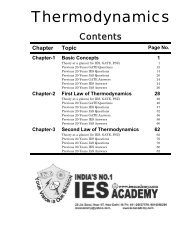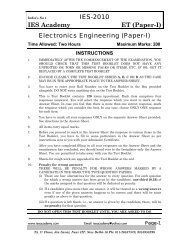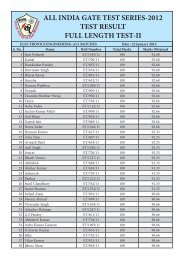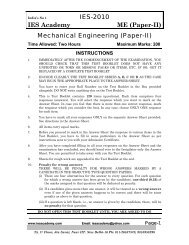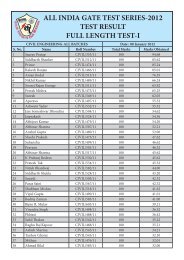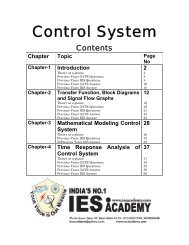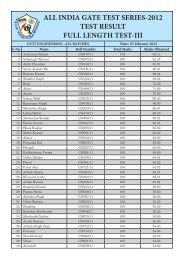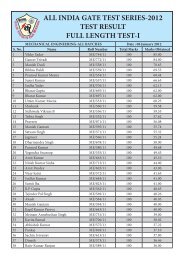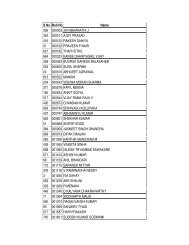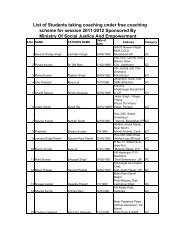Electrical Machine - IES Academy
Electrical Machine - IES Academy
Electrical Machine - IES Academy
Create successful ePaper yourself
Turn your PDF publications into a flip-book with our unique Google optimized e-Paper software.
India’s No. 1<br />
<strong>IES</strong> <strong>Academy</strong><br />
Transformer<br />
Chapter-1<br />
turns and it is seen to oppose V 1 . Since primary winding resistance is negligible, e 1 , at<br />
every instant must be equal and opposite to V 1 . Hence, V 1 = – E 1.<br />
dφ<br />
The emf induced in the secondary e2 =− N2 =− N2ωφ<br />
maxcosωt<br />
dt<br />
Rms valve of emf E2 is<br />
E2max 2 fN2 max<br />
E π φ<br />
2<br />
= = = 4.44fφ<br />
maxN2<br />
volts<br />
2 2<br />
E1 N1<br />
Hence, = = 4.44f<br />
φ m<br />
i.e. emf per<br />
E2 N2<br />
turn in primary = emf per turn in the<br />
secondary.<br />
The phasor diagram of an ideal transformer under no load conditions is as below:<br />
Emfs E 1 and E 2 lag the mutual flux that induces them by 90° The applied voltage V 1<br />
leads the flux by 90°.<br />
4. If secondary circuit is completed, it will produce a secondary current (load current). This<br />
load current produces a demagnetizing mmf (Lenz’s Law). The direction of secondary<br />
current I 2 should be such that the secondary mmf F 2 (= I 2 N 2 ) is opposite to mutual flux <br />
in the core. For F 2 to be directed against , the current I 2 must leave the terminal n, pass<br />
through the load and enter the terminal m. The secondary winding behaves like a voltage<br />
source, therefore, terminal n must be treated as positive and terminal m as negative. If<br />
secondary winding is wound in a manner opposite to that shown in the Figure, terminal<br />
m would be positive with respect to terminal n. This shows that polarity markings of<br />
the windings in transformers depend upon the manner in which the windings<br />
are wound around the legs with respect to each other.<br />
In order to maintain constant mutual flux,<br />
the primary current will increase and produce<br />
additional magnetizing mmf such that the net<br />
mmf and flux in the core is same as in the<br />
case of no-load. This increased primary<br />
current I1' is called load component of primary<br />
current.<br />
I1' N1 = I 2 N 2<br />
The phasor diagram of an ideal transformer is<br />
shown figure.<br />
www.iesacademy.com E-mail: iesacademy@yahoo.com Page-4<br />
25, 1 st Floor, Jia Sarai, Near IIT. New Delhi-16 Ph: 011-26537570, 9810958290




